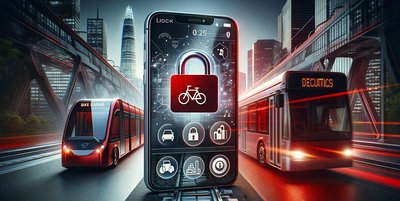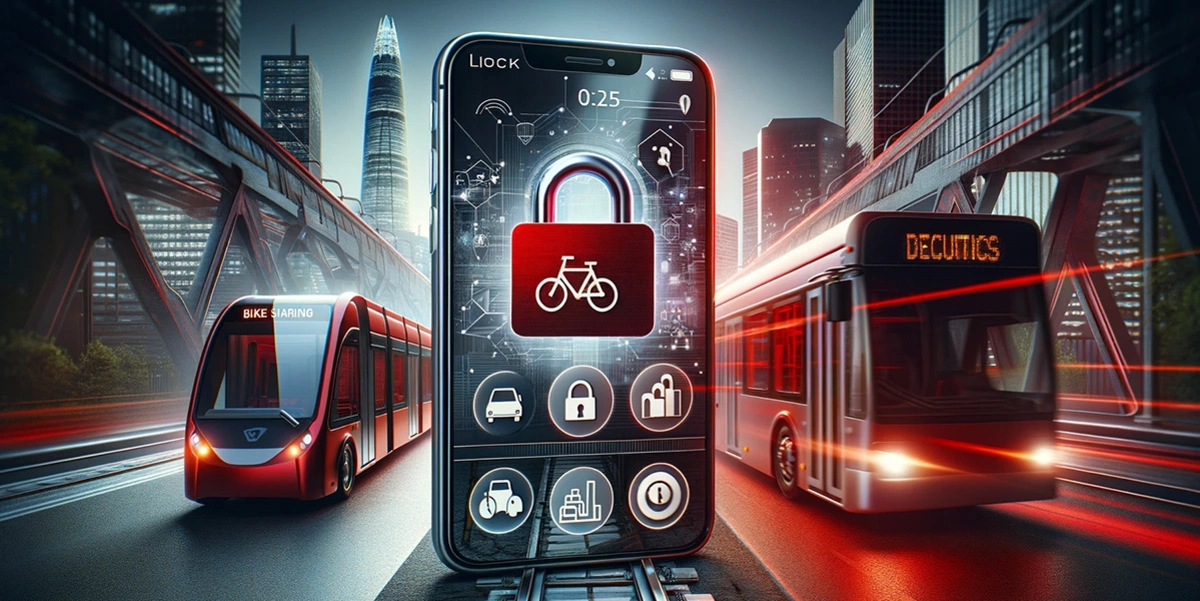Smart Moves: Transforming Urban Transit with Unified Access Systems


The Power of a Unified Transportation Network
Transportation is the lifeblood of the modern city, connecting people with employment, entertainment, commerce, city services, and friends and family throughout the metro area. Efficient transit systems enhance the quality of life by reducing commute times, improving accessibility, and supporting economic activities.
In most cities, the transit system includes a mix of transportation options. Buses and subway or light rail networks often form the backbone of the transportation system, connecting far-flung suburbs and facilitating efficient movement between different sectors of the city. Local or regional transit hubs may connect metro services with regional transit, such as passenger rail or ferry services. These hubs often include parking facilities and EV charging ports to accommodate commuters or tourists coming from more distant locations.
In recent years, many cities have put greater emphasis on “last mile” options to connect transit lines to businesses and neighborhoods. Instead of calling an expensive cab or walking long distances to areas not on the transit line, commuters in many cities can now grab a shared bike or scooter to get to their final destination. For longer distances or when carrying heavy packages, urban dwellers can take advantage of car share programs that provide the benefits of a private vehicle when needed without the costs of parking and upkeep.
In a unified transit system, people can use the same access technology to move seamlessly between different modes of transportation. One metro card or smartphone app can unlock access to all of the transit services needed. Imagine:
- A commuter drives her own car to the transit hub nearest to her house. Her metro system credential gives her access to the parking garage at the station.
- After parking her car, she takes the train into the city for work. Waving her card or smartphone over the turnstile reader grants entry into the metro system and logs her trip.
- Her metro stop is about one mile from her workplace. She could walk, but today, she decides to borrow a bike from the city bike share program. Using her metro system credential, she unlocks a bike from the stand, rides to work, and returns the bike to a location near her workplace.
- After work, she takes a bus across town to meet a friend for dinner. The friend, who arrived in a car share, drops her back off at the nearest metro station.
- Back in her own suburb, she picks up her car at the parking garage. The battery is a little low, so she charges it at the high-speed EV charging station next door.
All transit services are accessed using the same card or smartphone credential for a simple and seamless user experience. Her usage is logged automatically for billing and payment. She is not locked into a single mode of transportation but can choose exactly what she needs each day.
Why Unification Matters for Urban Transportation
A unified transit system provides many benefits for users, city planners and managers, and transit authorities.
- User Convenience: A unified system allows passengers to seamlessly switch between different modes of transport (like buses, trains, and bikes) using a single ticket or digital pass, greatly simplifying the travel experience. Integrated ticketing often comes with cost benefits for commuters, too, like reduced fares for multi-modal journeys or subscription models. A unified system can also enhance accessibility for those without access to a private vehicle, ensuring that all parts of the metro area are well connected with a variety of transportation options. This inclusivity is vital for the elderly, disabled, and low-income groups.
- Urban Planning and Development: A well-integrated transit system supports better urban planning, encouraging development around transit hubs and potentially leading to more sustainable city growth patterns. Improved transportation can stimulate local economies by increasing accessibility to jobs and services and attracting businesses and tourism. By offering efficient and attractive public transport options, unified systems can reduce reliance on private vehicles, thereby decreasing traffic congestion and lowering pollution levels.
- Data-Driven Improvements: Unified systems can collect comprehensive data on travel patterns, helping in optimizing routes, schedules, and services according to actual demand and usage. By analyzing travel patterns, a unified system can identify the most frequently traveled routes and times, allowing transit authorities to adjust routes and schedules to better match passenger demand. Analysis of commuter habits and preferences can lead to more tailored services, such as on-demand shuttles in less densely populated areas or additional bike-sharing facilities in areas with high demand for last-mile connectivity. Long-term data trends can be used to forecast future transportation needs, such as planning expansions or enhancements to the transit network.
- Real-Time Insights: Real-time data allows operators to monitor how crowded buses, trains, or metro cars are at different times. This information can be used to adjust the frequency of services or allocate larger vehicles on busier routes, thus managing capacity more effectively. Data can inform the development of user-focused features, such as real-time updates on vehicle locations, wait times, and seat availability, which can be accessed through smartphone apps. This transparency improves the overall user experience.
Setting Up a Unified Access System for Urban Transit
A fully integrated transit network rests on a unified access system that works for all modes of transportation, from bus and rail ticketing to bike share programs. There are several considerations in designing a unified access system for transit.
-
Identification media: Radio-frequency identification (RFID) cards and smartphone credentialling systems using Bluetooth® Low Energy (BLE) or Near-Field Communication (NFC) can both be smart choices for urban transit. Many commuters prefer a smartphone application, which eliminates the need to carry a separate card or token (and the risk of losing it). However, it is important to consider populations that are less likely to have access to a smartphone, such as youth, the elderly, and lower-income populations. For maximum accessibility, consider a system that can accommodate both cards and smartphone credentials.
- Transponder technology: In addition to the media type, transit authorities must choose the specific transponder technology that will be shared across transit applications. In many cases, it makes sense to leverage a technology already in use for core transportation elements in the system. For example, if the metro already uses MIFARE cards, the system can be built to enable riders to leverage their existing cards for additional applications such as bike share or ride share programs.
- Reader selection: A universal reader, such as the readers from the ELATEC TWN4 MultiTech line, is flexible and future-proof. These readers can support 60+ of the most common global transponder technologies in addition to smartphone credentialing systems using BLE or NFC. A universal reader can support multiple transponder technologies, so transit authorities can leverage the cards or smartphone credentialing systems already in use and simplify the transition to new technologies in the future.
ELATEC is already working with cities and transit authorities to reimagine the future of transportation. A smart, unified transit system is more than just a way to get from point A to point B; it’s a key to unlocking a more connected, accessible, and sustainable urban future
THE ELATEC NEWSLETTER Your authentication update
As a frequent reader, you will always be up to date with the latest information on the topic of authentication, know the current trends and receive valuable tips. By signing up to our newsletter, we will make sure you won't miss any new blog articles ever again. And on top, you get even more exciting news on our products, events and industry trends.